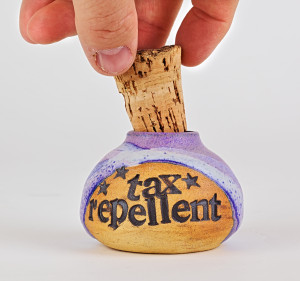Investors need to know the difference between tax-deferred and tax-free investing.
Tax-Deferred Investing
Investors can avail themselves to tax-deferred investing by contributing to their 401(k) plan at work or by funding their IRA. Contributions to these accounts are tax-deferred. The contributions are put in pre-tax. The funds grow tax deferred. When distributions are made from these accounts it is taxed as ordinary income.
Employees can contribute up to $23,500 to their 401(k) plan in 2025. Taxpayers aged 50 and older can contribute another $7,500 in a so-called ‘catch up contribution’ for a total contribution of $31,000.
Employees that can’t afford to contribute the maximum should do what they can and contribute up to at least the amount where they get the employer match.
During The Great Recession of 2007-2009 many companies eliminated their employer match. Due to the slowly improving economy many companies have re-instituted their employer match on their 401(k) plan.
Taxpayers can contribute up to $7,000 to their IRA in 2024 and 2025. Taxpayers over age 50 can contribute another $1,000 in a catch-up contribution for a total contribution of $8,000. Higher income taxpayers can’t make a tax-deductible IRA contribution.
Tax-Free Investing
Investors can avail themselves to tax-deferred investing by investing in state or municipal bonds. The interest earned on these bonds is exempt from federal income tax.
One way to have tax-free investments is to own state or municipal bonds.
The interest paid on these bonds is not taxable income on your federal income tax return.
State or municipal bonds may have state income tax ramifications. A state or municipal bond issued by the state that you are a resident of is also tax-free on the state income tax level.
For example, if you are a Connecticut Resident and you purchase a bond issued by the State of Connecticut there is no federal or state income tax to be paid on the interest. This is what is also known as double tax-free; no federal or state tax needs to be paid. However, if a Connecticut resident purchased a bond issued by New York this would be tax-free income on their federal return but taxable on their Connecticut return.
Another way to have tax-free income is to fund a Roth IRA.
In 2024 and 2025 taxpayers can contribute up to $7,000 into a Roth IRA if they have at least this much in earned income. Taxpayers aged 50 and older can contribute another $1,000 in a so-called ‘catch-up contribution’ for a total contribution of $8,000.
Contributions to a Roth IRA are not income tax deductible. However, if the account is open at least 5 years and the taxpayer is over age 59 1/2 when distributions are made then all the distributions are tax-free. High income taxpayers are not allowed to fund a Roth IRA.
Another advantage to the Roth IRA is that it is not subject to the Required Minimum Distribution rules (“RMD”) during the owners and surviving spouse’s lifetime. This could potentially allow for decades of tax-free growth.
This is original content written by Manchester, CT Financial Advisor Thomas F. Scanlon, CFP®, CPA.
The information contained in this report does not purport to be a complete description of the securities, markets or developments referred to in this material. The information has been obtained from sources considered to be reliable, but we do not guarantee that the forgoing material is accurate or complete. Any opinions are those of Thomas F. Scanlon, CFP®, CPA, and not those necessarily those of RJFS or Raymond James. Expressions of opinion are as of this date and are subject to change without notice. You should discuss your tax or legal matters with the appropriate professional.
Any information is not a complete summary or statement of all available data necessary for making an investment decision and does not constitute a recommendation. Past Performance is not indicative of future results. All investing involves risk. Income from municipal bonds is not subject to state or federal taxes; however, for certain investors, it may be subject to local taxes or the federal alternative minimum tax. Investments in municipal securities may not be appropriate for all investors, particularly those who do not stand to benefits from the tax status of the investment.
401(k) plans are long-term retirement savings vehicles. Withdrawal of pre-tax contributions and/or earnings will be subject to ordinary income tax and, if taken prior to age 59 1/2, may be subject to 10 percent federal tax penalty. Matching contributions from your employer may be subject to a vesting schedule. Please consult with your financial advisor for more information.
Contributions to a traditional IRA may be tax-deductible depending on the taxpayer’s income, tax-filing status, and other factors. Withdrawal of pre-tax contributions and/or earnings will be subject to ordinary income tax and, if taken prior to age 59 1/2, may be subject to a 10 percent federal tax penalty. RMD’s are generally subject to federal income tax and may be subject to state taxes. Consult your tax advisor to assess your situation.
Like Traditional IRAs, contribution limits apply to Roth IRAs. In addition, with a Roth IRA, your allowable contribution may be reduced or eliminated if your annual income exceeds certain limits. Contributions to a Roth IRA are never tax deductible, but if certain conditions are met, distributions will be completely tax free.
Neither Raymond James Financial Services nor any Raymond James Financial Advisor renders advice on tax or legal issues, these matters should be discussed with the appropriate professional.
